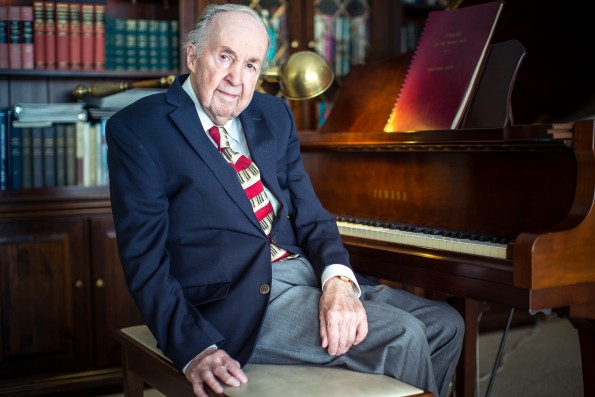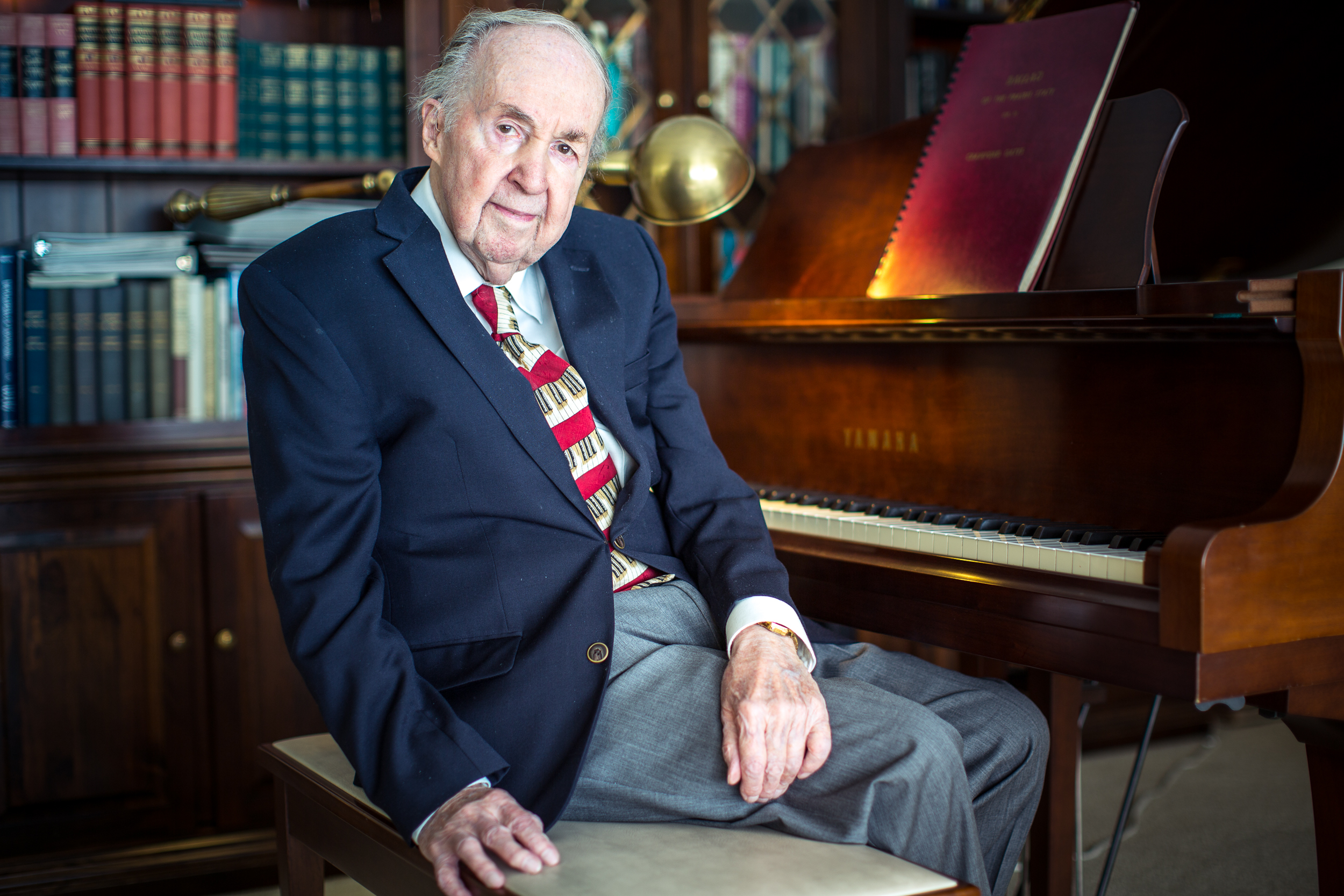
In an exquisitely decorated home, filled with memorabilia from a long career, overlooking the Salt Lake valley, lives one of the most prolific, world-renowned composers of our time. Crawford Gates is a well educated, well spoken man who has lived many adventures including an LDS mission where he used his musical talents to reach out to people, service during World War II as a Naval officer, and travels all over the world. He has composed 892 pieces and, at “93 and 10 months” is still composing.
Crawford grew up in California the only child of parents who encouraged and supported his musical talent. He remembers an “old beat-up piano” that was in his bedroom when he was five. His mother heard him playing the melody to My Country Tis of Thee. He had not lessons, didn’t know a thing about notes, but had a natural ear for music. His mother enrolled him in lessons for a year until his father lost his job. But Crawford didn’t give up, he continued to learn on his own, until he could start lessons again, with the piano at church.
He also discovered an early talent for composing. His first piece was Brownie’s Pony that he wrote at age 8. He said, “I notated it down rhythmically, tonally and key accurate.” He performed it for his third grade class and got a standing ovation. He credits an early teacher stressing musical theory as key to his success.
He excelled in academics as well and started his college career at 17 at the College of the Pacific. He picked the school for the well-known composer who taught there and attracted students from all over the country. He entered a composition contest, with a piece he called Camelot. He won the competition and people began to take notice. His piece was eventually performed by the San Jose Symphony and he got his first taste of conducting during a rehearsal.
It did not go well. “The orchestra didn’t like stopping for me to fix my mistakes. I started thinking I was not a composer or a conductor. I felt I was offending this wonderful orchestra. I was completely demoralized. But then the last 10 minutes were beautiful. There were no mistakes and the orchestra forgave me. They stood up and applauded.”
After Naval service during World War II Crawford came to Utah and attended Brigham Young University to study under Leroy Robertson who became like a “father or uncle” to him. Robertson also helped him get accepted to the Eastman School of Music in Rochester New York, where his earned his PhD. Despite excellent grades and his achievements he’d initially been turned down.
Highlights from his career include chairman of the BYU music department and conductor of symphony orchestras in Beloit, Wisconsin, Quincy, Illinois, and Rockford, Illinois. He was close friends with the late, Maurice Abravenel and was a frequent guest conductor at Utah Symphony concerts. Last year he was honored with a concert of his work at the Assembly Hall on Temple Square, “it was the finest recital of my life.”
In 1947, when he was 25, he wrote the score for the musical, Promised Valley. The piece was commissioned by the state to honor the centennial of the arrival of the Mormon pioneers. It played for 19 summers at an outdoor amphitheater near Temple Square and is still performed to this day.
Despite all his success and the accolades he’s received over the years he counts his family as his greatest blessing and accomplishment. “I always wanted brothers and sisters, but it never happened. I even had names picked out for two brothers and two sisters. As is happened I had four children – two boys and two girls – I was able to finally use those names.” His family now numbers 55 with children, grandchildren and great-grandchildren. He gives credit to God for that and all his other “blessings.” “I never start a piece without kneeling down in private to ask the Lord to bless my mind in writing. I started that practice with my first composition at age 8 and continue it to this day.”
Story by Connie Lewis






